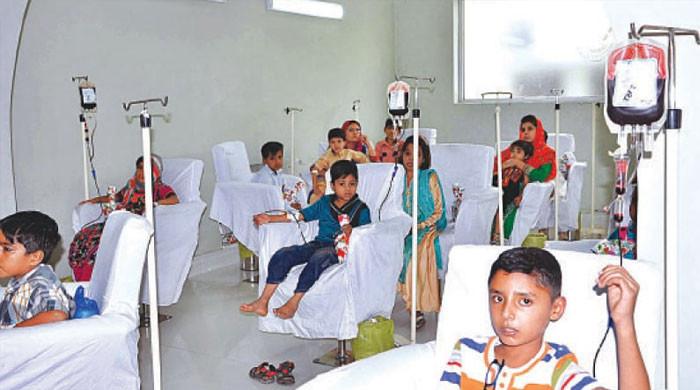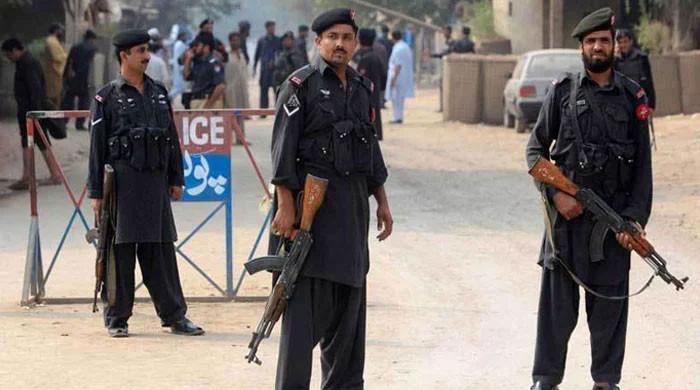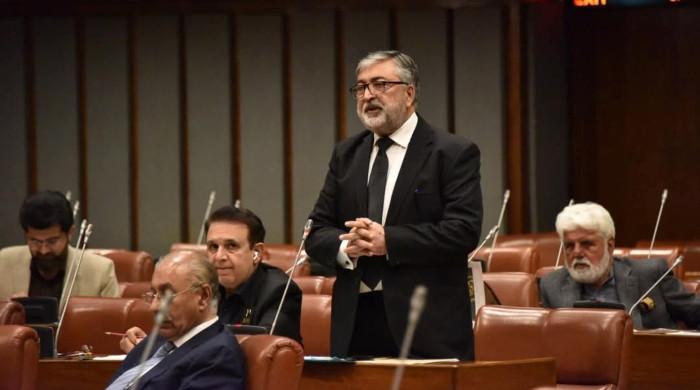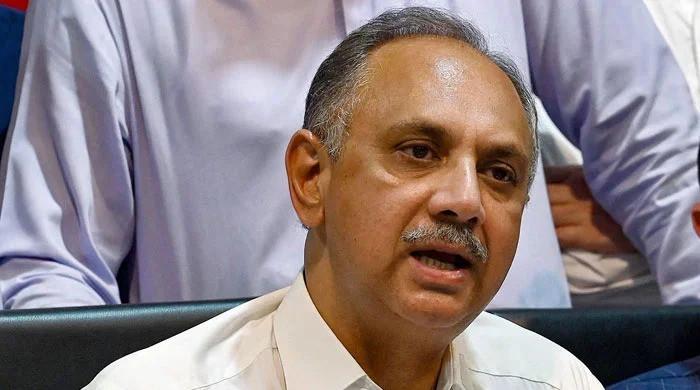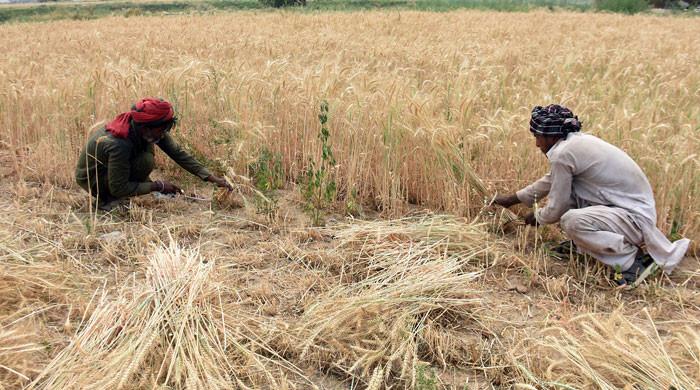Can Pakistan break cycle of destruction in flood rebuilding?
More than 1,700 people were killed, 8 million displaced, destroying million of homes and businesses in country
February 02, 2023
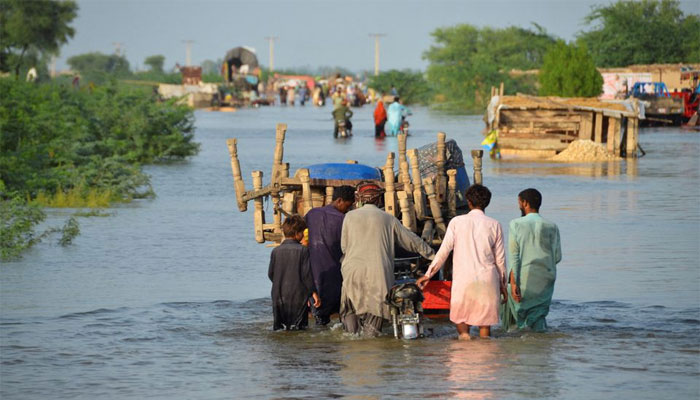
- Donors pledge $9 billion for Pakistan flood rebuilding.
- Recovery plan targets climate resilience and adaptation.
- Poor water management, urban planning blamed for damage.
GOZO: It is nearly five months since floodwaters swept away Muhammad Fazal's general store in southern Pakistan. Today, he is rebuilding his shop on taller, sturdier foundations — hopeful he will be better prepared the next time floods hit his village.
Fazal, 28, who borrowed the money for the construction work from a nonprofit organisation, counts himself among the lucky ones — despite his 400,000 rupees loss — as many Pakistanis struggle to recover from last year's devastation.
"I've raised the level of my shop and I'm rebuilding it better," he said in his village of Gozo in Dadu, a densely populated district of Sindh province that was hard hit by the ruinous nationwide floods.
More than 1,700 people were killed and 8 million were displaced by the flooding, which also destroyed about a million homes and businesses across the country of 220 million people, disaster management officials say.
About five million people — mostly in Sindh and the southwestern province of Balochistan — are still exposed to floodwater months after monsoon rains and melting glaciers caused the disaster.
With waters still receding, international donors pledged more than $9 billion in Geneva last month to help the cash-strapped South Asian country recover and rebuild.
Pakistan, which is mired in a deepening economic crisis, had sought funds to cover around half of a recovery bill amounting to $16.3 billion.
Now, it aims to use the money to implement its Resilient Recovery, Rehabilitation, and Reconstruction Framework (4RF), a recovery strategy that sets out to build long-term climate resilience and adaptation.
That will mean boosting its flood defences to prevent a repeat of the loss of lives, livelihoods and infrastructure, and government officials say swift action is vital as climate change impacts gather pace.
"Developing countries like Pakistan face an accelerated onset of climate disasters before we can rehabilitate. What if this summer brings fresh horrors? We are in a race against time," the country's climate change minister, Sherry Rehman, told the World Economic Forum (WEF) in Davos last month.
Past lessons
In 21 major floods between 1950 and 2011 — almost one flood every three years — Pakistan lost about $19 billion, according to an Asian Development Bank (ADB) study on devastating floods in 2010 that caused damage of about $10 billion.
An additional nine million people risk being pushed into poverty on top of the 33 million affected by last year's floods, the UN development agency said on January 5, just before the Geneva conference.
This time, lessons must be learned, said Amir Ali Chandio, a political economy and human rights academic who recently retired from Sindh's Shah Abdul Latif University, Khairpur.
Like many other experts, he says the loss of lives and property over the years has been aggravated by poor floodwater management at a time of rapid development and population growth.
"Natural waterways have been encroached upon. People have made their houses on waterways. Roads without bridges have also blocked the water path," said Mustafa Mirani, chairperson of the Fisherfolk Forum civil society group.
Unchecked construction in flood-prone areas is an aggravating factor, said Ajay Kumar, an official with the Sindh Provincial Disaster Management Authority, but he said heavy rains "did the real damage" last year.
Beyond repairing the immediate damage, the flood response must be holistic and far-reaching if it is to succeed in building climate resilience, said Muhammad Ismail Kumbhar, a rural development consultant and agricultural education extension expert.
"We need a climate action plan, a climate youth policy, climate-smart agriculture and livestock. People should know how to be resilient in the face of climate change. An insurance policy for crops and livestock should be introduced," he said.
He called for the mapping of high-risk areas, and the opening of natural waterways. Houses in areas next to coasts or riverbanks, or in other flood-prone spots, should be built on raised platforms, and farmland should be rehabilitated.
The ADB report recommended beefing up flood forecasting and early warning systems and linking any efforts to build large reservoirs to cope with recent water and energy crises to flood management.
Transparency
Presenting the 4RF plan in Geneva, Prime Minister Shehbaz Sharif said the government would utilise "every penny" of the pledges to benefit flood-hit people, trumpeting the success of emergency measures including the distribution of cash grants to 2.7 million households.
The strategy details plans for thorough third-party auditing and mechanisms to ensure transparency and well-targeted spending.
About 90% of the commitments for the recovery will be rolled out as project loans over the next three years, Finance Minister Ishaq Dar said after the Geneva meeting. The rest is aid.
Ensuring the money gets spent on the right projects is vital to the plan's long-term success, said Malik Amin Aslam, a former aide to Pakistan's prime minister for climate change.
"The efficacy of this funding will all depend on how transparently these funds are used to ensure they can be maximised for climate-compatible development," said Aslam by phone.
While praising the plan, he said a more substantial chunk of the funding should be allocated to immediate and urgent relief for the millions of people still affected by the disaster.
Implementing the government's strategy to develop "climate-resilient, sustainable and adaptive infrastructure" will only be possible if local officials are on the same page, said Ahmad Rafay Alam, an environmental lawyer.
"For this to work, we also need to capacitate local governments," he said, noting that the $9 billion pledged by donors fell far short of the World Bank's loss and damage estimate of $30 billion.
Resilience
Badly in need of immediate relief are people like Aziza, 25, a mother-of-six who lives in a small village in the Dadu district.
The floodwaters destroyed the house that she and her husband managed to build after selling their buffalo, leaving them to salvage what they could from the wreckage, she told the Thomson Reuters Foundation.
Now, all the family have for shelter is a one-roomed thatched hut perched on an islet surrounded by stagnant water. There is not even a toilet, and Aziza and her husband barely earn enough to buy food — let alone building materials.
When her neighbour Allah Wadhaya's wife went into labour, they had to travel 20 km by boat in floodwater from their village to the town of Johi.
The roads are no longer underwater, but life is far from back to normal, said Wadhaya, a brick labourer.
"There isn't much labour yet for us because there's still floodwater standing in villages and fields. The relief packs we get aren't enough and I've sold off whatever little gold I had," he said, standing next to the ruins of his mud-brick home.
In several places, international aid organisations and local NGOs are supporting climate-resilient house reconstruction.
In the village of Pehlwan Khan Khosa in Sindh's Jamshoro district, a project funded by the International Labour Organisation paid villagers to rebuild their flood-ravaged homes.
HANDS Pakistan, a nonprofit, has helped people rebuild about 90,000 flood-resistant houses since 2012, training masons and providing technical support.
"Having tapered roofs, 80% of the houses we helped people build survived the (2022) flood," said Anis Danish, chief services executive at HANDS, showing off models of specially designed houses and bricks at his office in Karachi.
"Now we have to go for resilience religiously," he said. "We need to break the cycle of destruction."




